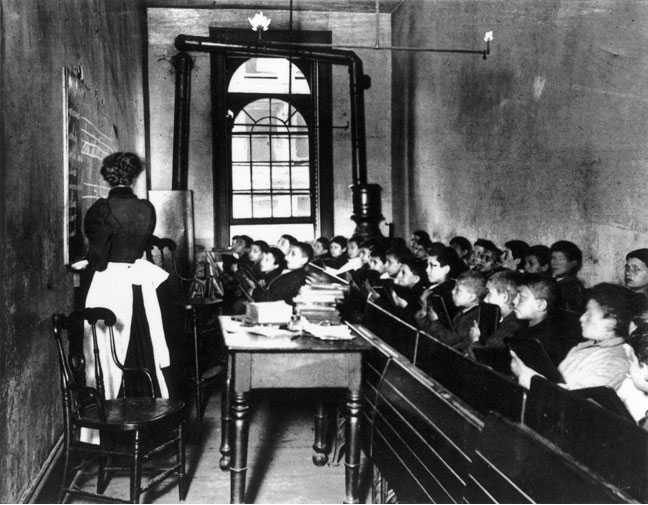To study mobility in a large industrial country is extraordinarily difficult. Americans in the late nineteenth century believed their society offered great opportunities for individual advancement, and to prove it they pointed to men like Andrew Carnegie and to other poor boys who accumulated large fortunes. How general was the rise from rags to riches (or even to modest comfort) is another question.
Americans had been on the move, mostly, of course, in a westward direction, since the colonial period, but studies of census records show that there was considerable geographic mobility in urban areas throughout the last half of the nineteenth century and into the twentieth. Most investigations reveal that only about half the people recorded in one census were still in the same place ten years later. The nation had a vast reservoir of rootless people. For many, the way to move up in the world was to move on.
In most of the cities studied, mobility was accompanied by some economic and social improvement. On the average, about a quarter of the manual laborers traced rose to middle-class status during their lifetimes, and the sons of manual laborers were still more likely to improve their place in society. In New York City about a third of the Italian and Jewish immigrants of the 1890s had risen from unskilled to skilled jobs a decade later. Even in Newburyport, Massachusetts, a town that was something of an economic backwater, most laborers made some progress, though far fewer rose to skilled or white-collar positions than in more prosperous cities.
Such progress was primarily the result of the economic growth the nation was experiencing and of the energy and ambition of the people, native-born and immigrant alike, who were pouring into the cities in such numbers. The public education system gave an additional boost to the upwardly mobile.
The history of American education after about 1870 reflects the impact of social and economic change. Although Horace Mann, Henry Barnard, and others had laid the foundations for state-supported school systems in the 1840s and 1850s (see Chapter 10), most of these systems became compulsory only after the Civil War, when the growth of cities provided the concentration of population and financial resources necessary for economical mass education. In the 1860s about half the children in the country were getting some formal education, but this did not mean that half the children were attending school at any one time. Sessions were short, especially in rural areas, and many teachers were poorly trained. President Calvin Coolidge noted in his autobiography that the one-room school he attended in rural Vermont in the 1880s was open only in slack seasons

Jacob Riis's photograph of a class on the Lower East Side of New York City. At Riis's death, Theodore Roosevelt called him "the staunchest, most efficient, friend the children of New York City have ever had.”
When the twenty-odd students were not needed in the fields. “Few, if any, of my teachers reached the standard now required,” he wrote, adding that his own younger sister had obtained a teaching certificate and actually taught a class when she was only twelve.
Thereafter, steady growth and improvement took place. Attendance in the public schools increased from 6.8 million in 1870 to 15.5 million in 1900, a remarkable expansion even when allowance is made for the growth of the population. More remarkable still, during a time when prices were declining steadily, public expenditures for education nearly quadrupled. A typical elementary school graduate, at least in the cities, could count on having studied, besides the traditional “Three Rs,” history, geography, a bit of science, drawing, and physical training.
Industrialization created many demands for vocational and technical training; both employers and unskilled workers quickly grasped the possibilities. Science courses were taught in some of the new high schools, but secondary education was still assumed to be only for those with special abilities and youths whose families did not require that they immediately become breadwinners. As late as 1890 fewer than
300,000 of the 14.3 million children attending public and private schools had progressed beyond the eighth grade and nearly a third of these were attending private institutions.
Education certainly helped young people to rise in the world, but progress from rags to real riches was far from common. Carnegies were rare. A study of the family backgrounds of 200 late-nineteenth-century business leaders revealed that nearly all of them grew up in well-to-do middle-class families. They were far better educated than the general run, and most were members of one or another Protestant church.
The unrealistic expectations inspired by the rags-to-riches myth more than the absence of real opportunity probably explains why so many workers, even when expressing dissatisfaction with life as it was, continued to subscribe to such middle-class values as hard work and thrift—that is, they continued to hope.




 World History
World History









